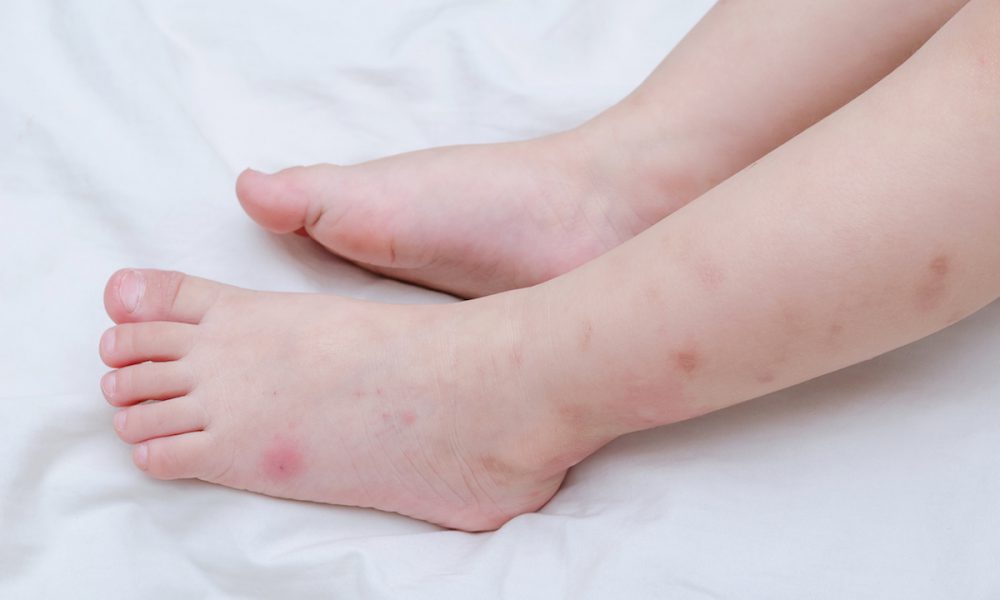
“There are two species of bedbugs that are known to feed on human blood. They are known scientifically as Cimex lectularius and Cimex hemipterus. They have been found in the tombs of ancient Egyptians from 3,500 years ago. Over millions of years, bedbugs have evolved as nest parasites, inhabiting the nests of birds and the roosts of bats. Some of them have learned to adapt to the human environment. Bedbugs are seen as a growing problem within all types of dwellings, including private homes, dormitories, cruise ships, army barracks, and shelters”, reports Medical News Today.
Name
They are called bedbugs because of their preferred habitat in human homes: Sofas, bed mattresses, clothing, and other soft furnishings.
Appearance
Bedbugs are small red-brown and wingless. They are hematophagous ectoparasites that preferentially feed exclusively on the blood of warm-blooded animals. Humans are the preferred hosts for the two main species.
Size
Newborn bedbugs, called hatchlings or nymphs, are tiny but visible and about the size of a poppy seed. Adults grow to about 0.25 inches long with an oval and flattened shape when they are not feeding. After feeding, they can double in size. Nymphs, eggs, and adults are visible to the naked eye.
Climate
Cimex lectularius dwells in temperate climates and C hemipterus in more tropical climates, but overlap and interbreeding are common.
Life Cycle
The usual life cycle is about 6 months, but some bugs live 12 months or longer. The female bedbug lays 5 to 8 eggs per week, or approximately 500 eggs in her lifetime, and each egg hatches in 5 to 10 days.
Living Areas
These photophobic parasites do not live on their human hosts but rather simply visit for a meal. They cohabitate in dark locations, attacking human hosts when they are inactive or sleeping for long periods of time. Common living areas include mattress seams, box springs, bed linens and clothes, wallpaper seams, electrical outlets, and furniture seams. The female bedbug lays her eggs in these secluded crevices, ensuring their safety until hatching. The dense nests of adult bedbugs, their eggs, and accumulated fecal matter allow for easy visual identification of infestation.
Bedbugs can be transmitted either through active migration of colonies from one area to another adjacent living area through wall spaces or ventilation, or through passive transportation in luggage, clothing, furniture, used mattresses, bookbags, and other personal items. Although infestation affects people of all socioeconomic classes and backgrounds, the likelihood increases in people who frequently travel and people who live in lower income neighborhoods with tightly packed apartments.
Feeding
The Cleveland Clinic Journal of Medicine reports that “bedbugs typically feed between 1:00 am and 5:00 am. Though wingless, they successfully navigate towards their human host, attracted by emitted heat and carbon dioxide. Once attached to human skin, the bedbug bite releases enzymes and chemicals including nitrophorin and nitric oxide that facilitate bleeding; these substances are responsible for the resultant dermatitis. After feeding for 3 to 20 minutes, the length and weight of the arthropod can increase by 50% to 200%. A fully sated bedbug can survive for a year until its next meal. Even if an establishment, home, room, or article of clothing infested with bedbugs has been abandoned for several months, without proper eradication the item still represents a possible nidus for recurrent disease if used, inhabited, or worn again”.
Signs
“The most obvious sign of bedbugs in the home is that people complain of bites that occurred while they were asleep. If this happens, examine the bedrooms for bedbugs and signs of bedbug activity. Look carefully in bed linens and the seams and tufts of mattresses and box springs for bugs or eggs. The eggs will look like tiny, pale poppy seeds. Signs of bedbug activity may occur beneath loose areas of wallpaper near beds, in the corner of desks and dressers, in the laundry, and in drawers. Keep an eye out for dark brown or rust-colored bedbug droppings that stain material and mattresses. Bedbug excrement is a liquid that looks either light brown or black, and it usually either beads up or is absorbed by the material around it”, states Medical News Today.
If you see any signs or are considered that you may have an infestation of bedbugs, do not try to treat bed bugs yourself. Contact a pest control service for effective removal of bed bugs.
Houseman Services is the only complete service company in the Athens, GA area. We provide Weed control, fertilization, shrub care, mulch & pine straw, sod, annual plantings, irrigation, and commercial & residential lawn maintenance. We are also state certified and licensed in wood destroying organisms (termite control), household pest control, public heath, and turf & ornamental weed control. We are licensed to control and treat mosquitoes, termites, all pest problems and turf & ornamental weed control. Contact the professionals at Houseman Services and set up a free inspection of your yard. We have been servicing homes and businesses in the Athens, Clarke County area since 1985!